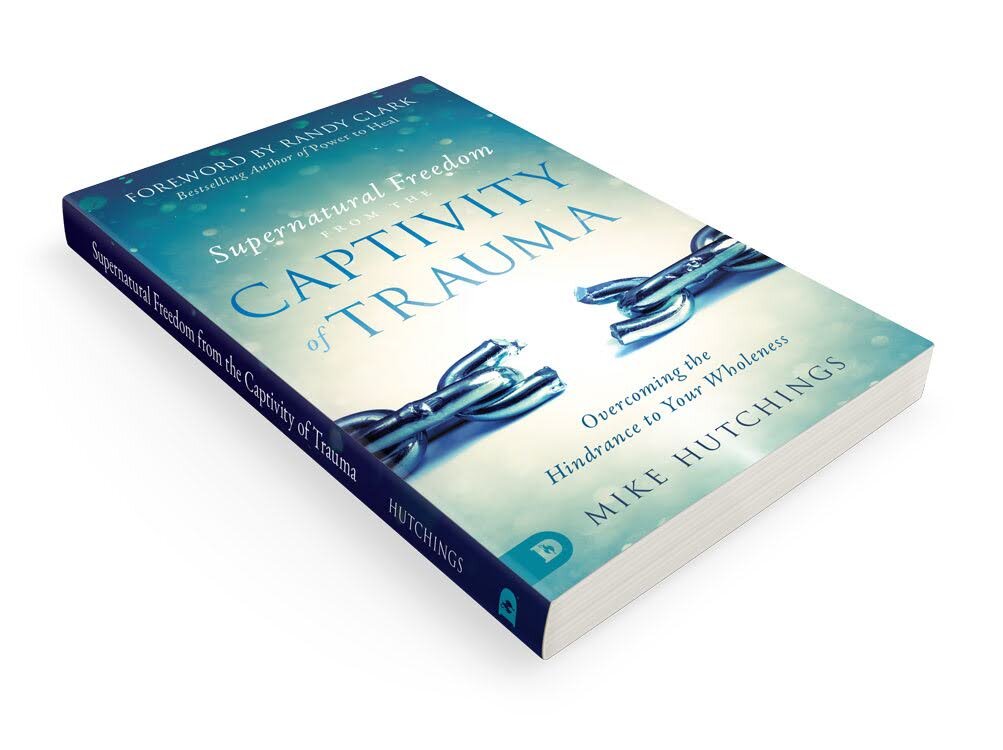Supernatural Freedom From The Captivity of Trauma Review Part 2
CHAPTER 2: UNDERSTANDING TRAUMA AS A SOUL INJURY
Almost everyone who lives an average lifespan will experience some form of trauma during their lifetime. That said, just because a person experiences a traumatic event does not mean that they will develop PTSD. There are many symptoms and characteristics that go into diagnosing post-traumatic stress.
Post-traumatic stress disorder is defined as a condition that arises when a person experiences a combination of multiple symptoms related to a traumatic event that causes them to develop a severe anxiety disorder that prevents them from living a normal lifestyle. In Chapter two of Supernatural Freedom From The Captivity of Trauma, Mike Hutchings provides his readers with a list of symptoms and other tell-tale characteristics of PTSD.
SIGNS AND SYMPTOMS OF PTSD
- Flashbacks
- Nightmares
- Emotional Numbness
- Depression, Anxiety, Irritability
- Hypervigilance
- Chronic Nerve Pain
- Inability to Focus
- Insomnia
- Addictions
- Over-Medication
- Suicide
- Isolation
ADDRESS MENTAL TRAUMA IN THE CHURCH
Unlike Christ, the church, which is made up of billions of individuals worldwide, is fallible and not beyond reproach when it comes to a long list of systemic, spiritual, and even mental health-related issues.
Generally speaking, when it comes to mental health, many of those within the Christian faith unwittingly fail those who struggle with mental illness, namely post-traumatic stress disorder. In many denominations, the matter of PTSD is treated as though the afflicted person is being controlled or otherwise affected by a demon or even the devil himself. The notion that a mentally unwell person suffers from demonic intervention is not only demonstrably false, it is also unjust and often severely hurtful to afflicted members of the church – it makes them feel unworthy and alienated.
All too often, traumatized members are told to pray the pain away, study their bible with more intensity, and so on. This way of thinking is dangerous and even cruel, especially when it comes to those who live with severe post-traumatic stress disorders.
When a person with PTSD is told their pain is caused by demonic forces that need to be healed rather than treated, they may feel ashamed of their already unsparing and critical symptoms. What’s worse, when we treat members of our own church this way, it significantly increases the odds they will take their own life – a morbid trend that affects every demographic of traumatized church-goers.
The good news is that through God’s help and guidance, we as members of the Body of Christ already have the keys to bring healing to the traumatized mind.
CHAPTER 3: A BIBLICAL UNDERSTANDING OF TRAUMA
In chapter three, author Mike Hutchings points to biblical examples of traumatization, beginning with King David himself – a biblical hero who he believes to be perhaps the most traumatized character in the Bible. Hutchings points to Psalm 34:18 to demonstrate the resolve of David’s faith when faced with the lowest depths of his despair: “The Lord is close to the brokenhearted and saves those who are crushed in spirit.”
To be brokenhearted means to feel as though you are shattered into a million unfixable pieces; to live as though you are nothing more than reflective glass shards in the shape of what once was a whole person. For many in the church, living with PTSD is to live wounded, closed off from everyone else. Traumatized, broken, and with fortified walls surrounding their heart, these members of the Body of Christ may even feel guilty as if what has happened to them is some twisted cosmic sense of retribution or testing of their faith. Some translations of the Bible refer to such agonized church members as “crushed in spirit.”
But, as David – who, as we all know, understands the throes of trauma like few else in the Bible – emphatically declares: God is near to the brokenhearted and saves those crushed in spirit.
LIVING AS OVERCOMERS
Author Mike Hutchings gives readers three factors that he has witnessed firsthand help the most traumatized people in our society, including health workers, soldiers, firefighters, police officers, and EMTs:
- Having strong family support - According to Hutchings, in his decades’ worth of experience, those who have or seek out to build a strong relationship with their loved ones are easier able to handle traumatic stress.
- Faith in God - Those who have a strong belief in God to fall back on can walk in faithfulness to such a degree that they can transfer their pain and burdens to Him. As Jesus tells us, “Come to me you weary, and I will give you rest.”
- Ability to process trauma - Developing an ability to handle trauma properly starts with a willingness to deal with traumatic events in proactive ways, including effectively talking about trauma and articulating how it affects your psyche and spirit.
CHAPTER 4: THE EFFECTS OF TRAUMA ON THE MIND
Post Traumatic trauma is a devastating condition that proverbially shatters a person into metaphorical pieces. Unfortunately, however, the constant pain of trauma is all too literal, drastically affecting all three parts of the human psyche: the mind, will, and emotions. As Hutchings informs his readers, PTSD is an injury of the soul that, according to him, can only be healed through the power of prayer.
TRAUMATIC BRAIN INJURY AND PTSD
The human brain is perhaps the most sophisticated and complex of God’s creations. It is the command center for the human body, capable of abstract thought, sense of self, and the uniquely human ability to contemplate our existence and the existence of others. Yet, the depth of our infinitely complex brains is such that many of its capabilities and functions are still a mystery to us.
Inside the human brain, you will find a complex array of glands responsible for particular functions. These glands are made up of the hippocampus (the gland in charge of storing memories), amygdala (the gland responsible for producing fight or flight hormones), and the thalamus and hypothalamus (these glands serve as relay stations between the spinal cord and brain, giving us sensory input and the ability to respond to stimuli). At the front of our brain lies perhaps the most consequential part of all, the prefrontal cortex. The prefrontal cortex is responsible for cognitive behavior, personality expression, decision making, and moderating social behavior. In other words, this anterior part of the brain is where our consciousness exists; it’s what makes us, us.
With all of the moving parts and crucial functions of the human brain, suffering trauma can significantly impact functionality and physiology. For example, studies show that trauma can disrupt our brain's left and right lobes from communicating with each other, shrinking the hippocampus in the process. When this happens, afflicted individuals have a difficult time accessing their memories in that they consistently must go through the access point of traumatic experiences first. This disruption leaves many severely traumatized people unable to access most or any positive memories whatsoever. Worst still, severely traumatized brains cause the traumatic event or events from years ago to feel as though they are currently happening in real-time.
Trauma-induced disruptions between the right and left parts of the brain can significantly impede a person’s ability to handle their emotions or react to stressful situations appropriately. A traumatized brain, in a sense, is held captive to traumatic memories and images of its past.
At this point in the chapter, author Mike Hutchings implores his readers that while seemingly bleak, traumatization of the brain’s hippocampus can be healed through the power of prayer. Hutchings draws from his firsthand experience in praying for a traumatized hippocampus of a woman – who had witnessed her daughter die in a car accident – to be able to flow with positive thoughts and memories again.
“As we began to pray to sever the neuropathways that led to those traumatic images and memories and break the power of pain, the Spirit of God came upon her and began to heal her. Suddenly her posture changed. She had bent down, almost hunched over as if she had a back issue. As the spirit of God moved on her, her countenance and her posture changed. She started praising and worshiping God, crying uncontrollably. Then her crying moved to laughter as she saw her daughter again for the first time, whole and heald before Jesus.”
The next day, Hutchings writes that the woman said the traumatic images of her daughter were no longer plaguing her and that she was able to sleep for eight hours for the first time in two years.
This anecdote is just one example of how praying and essentially “speaking” to traumatized neuropathways can rid them of traumatic images. Through Jesus’ name, we can severe the root cause of traumatic images, thus freeing the traumatized person of the memories altogether or removing the pain they carry.

